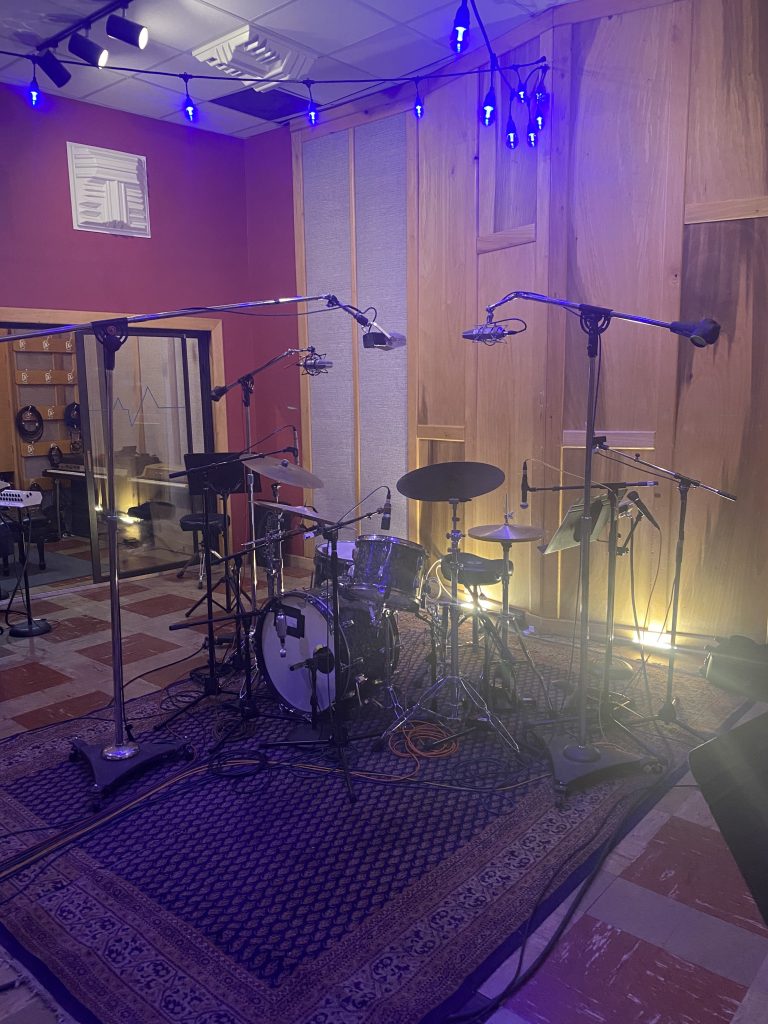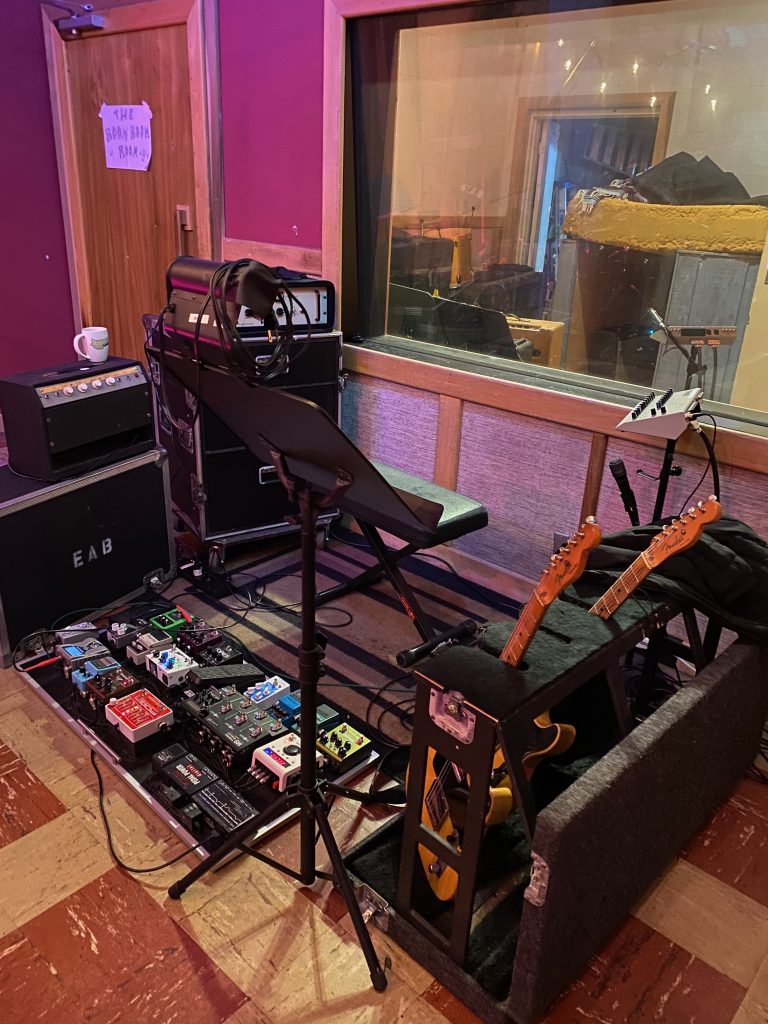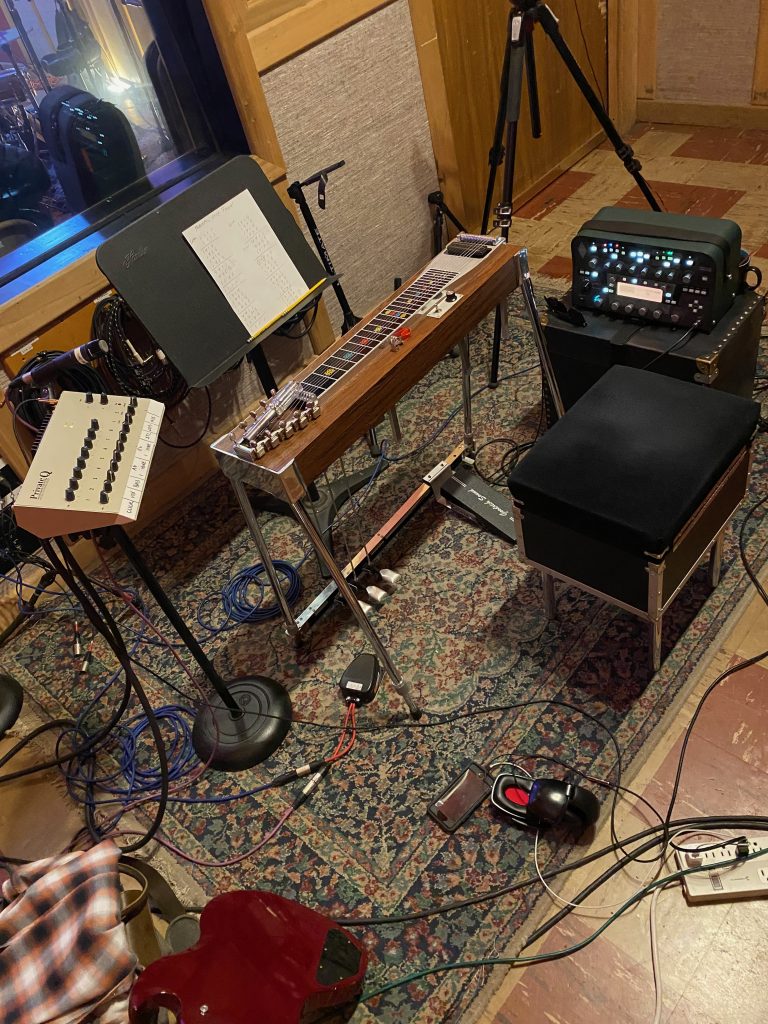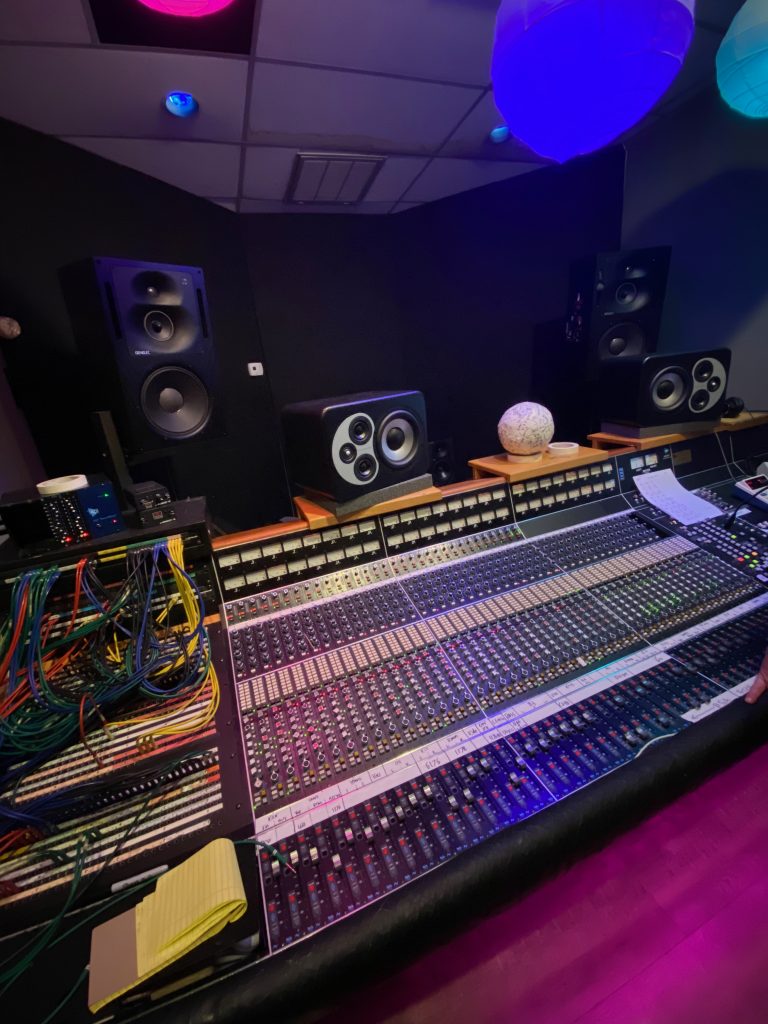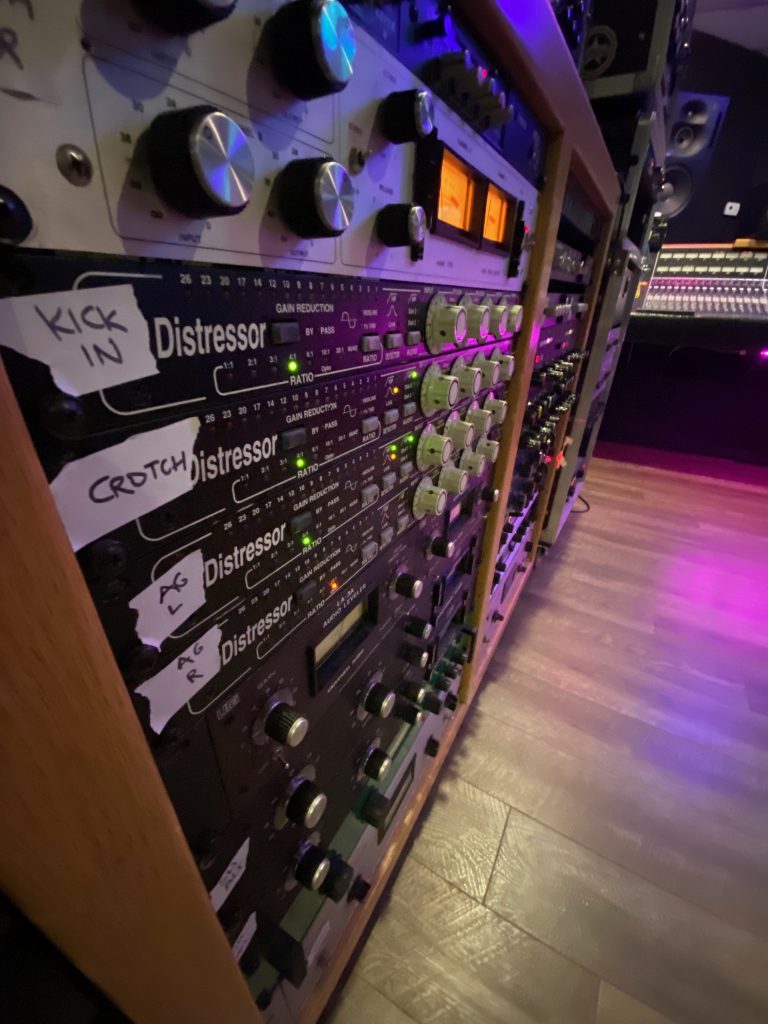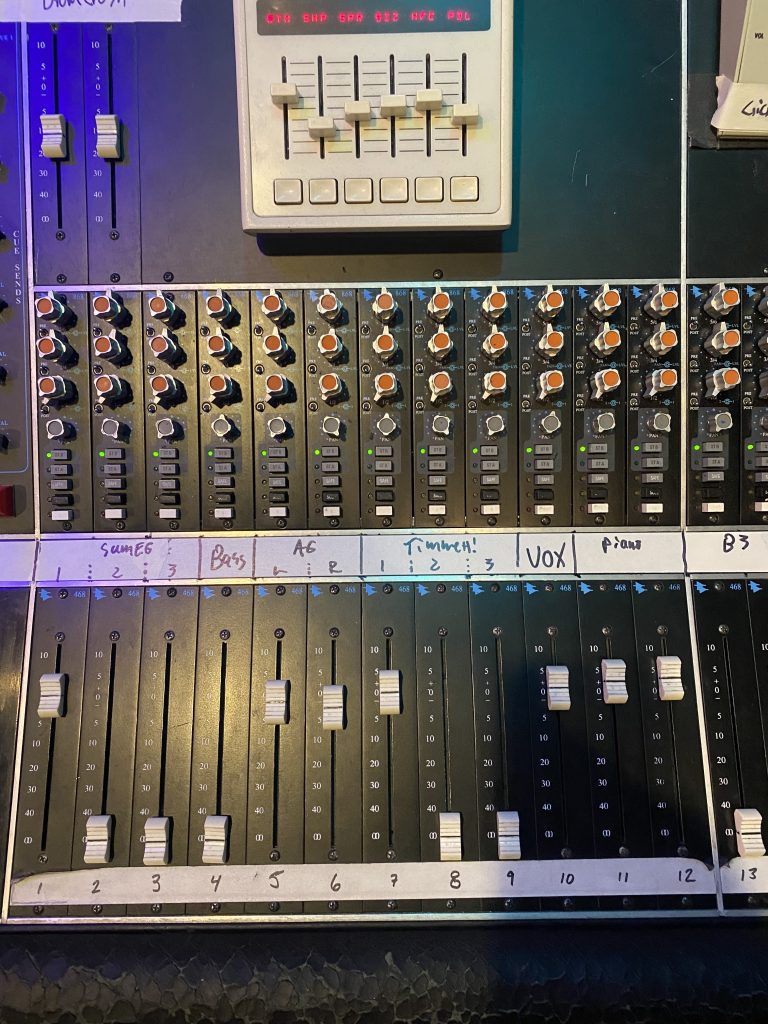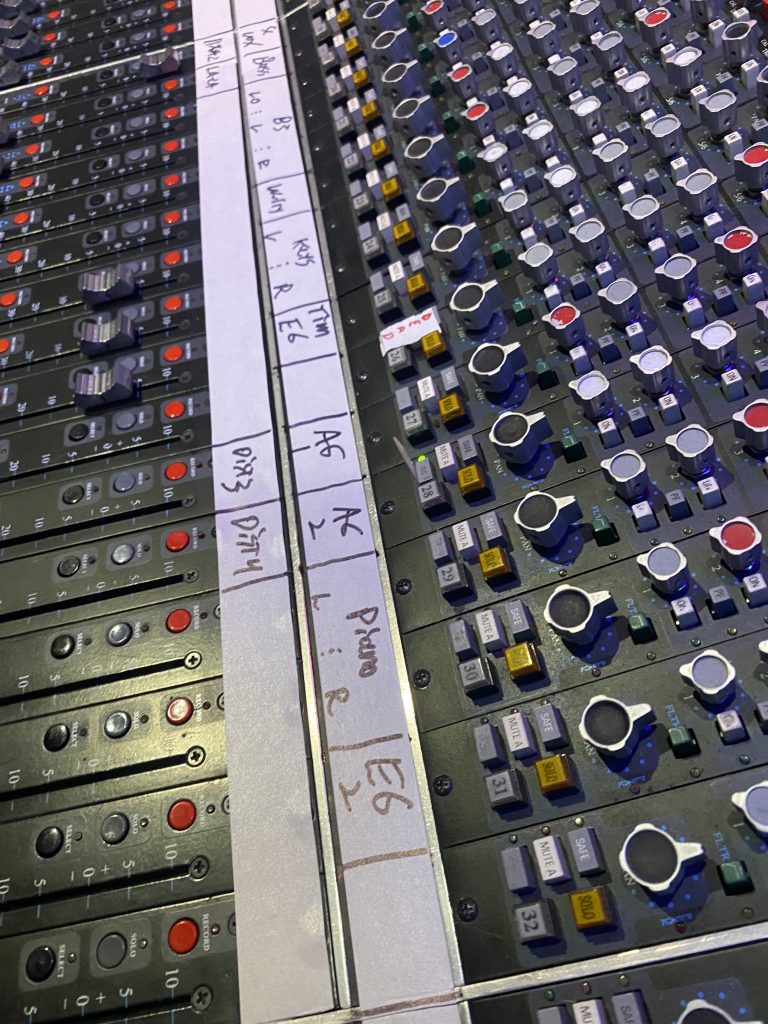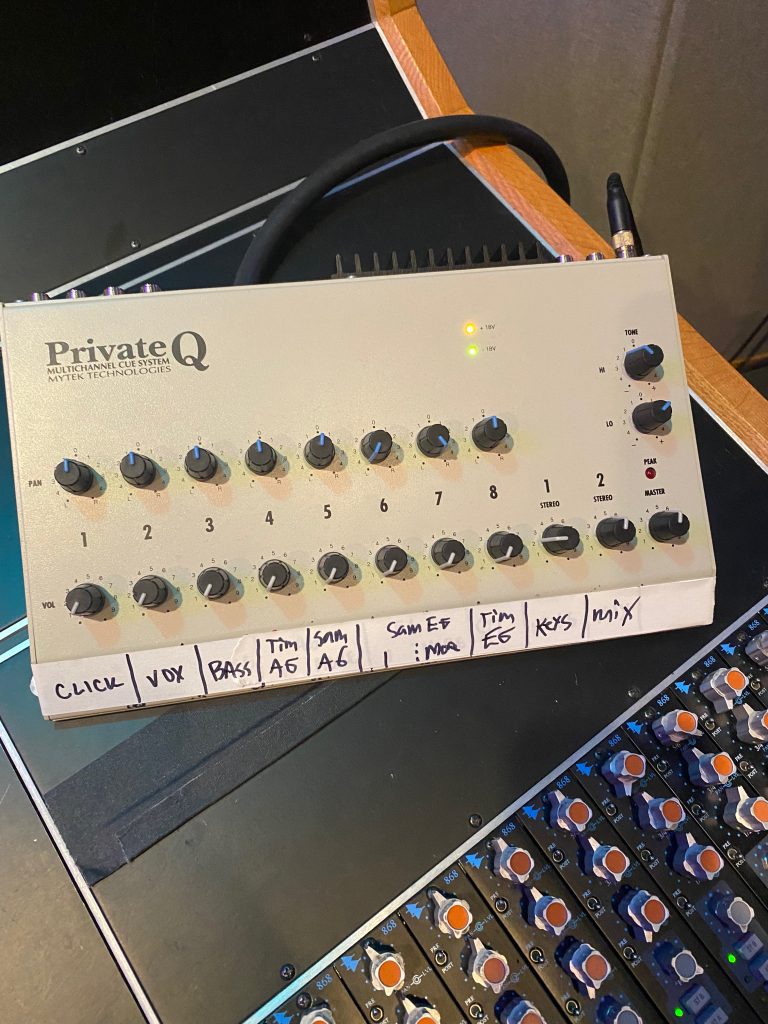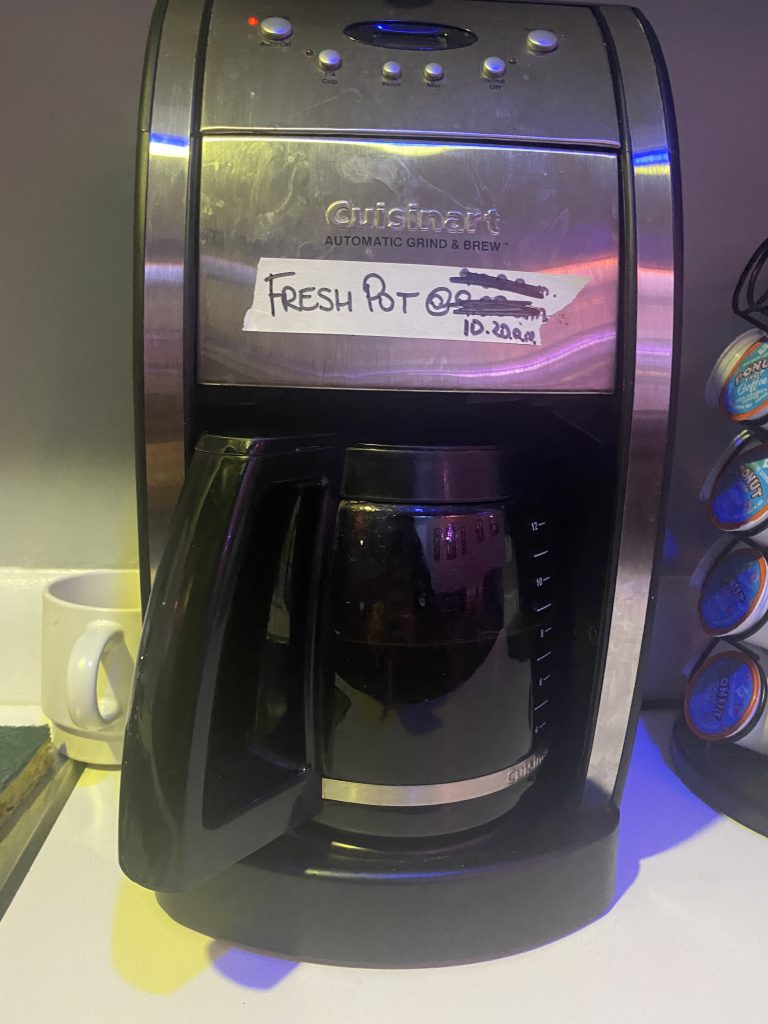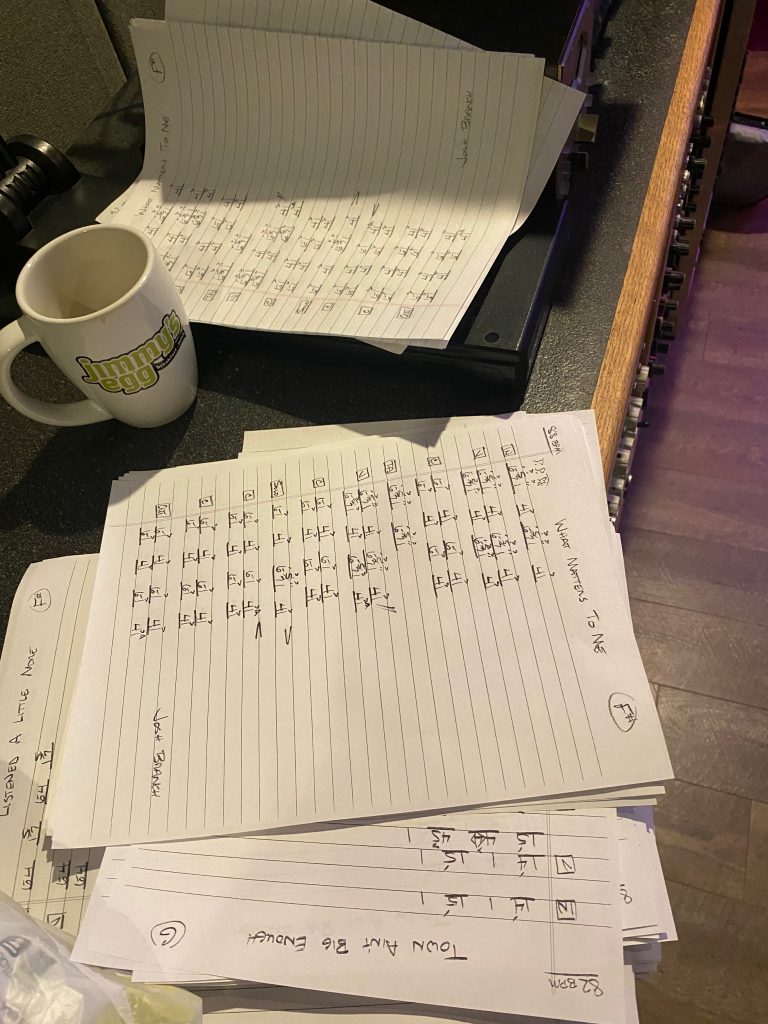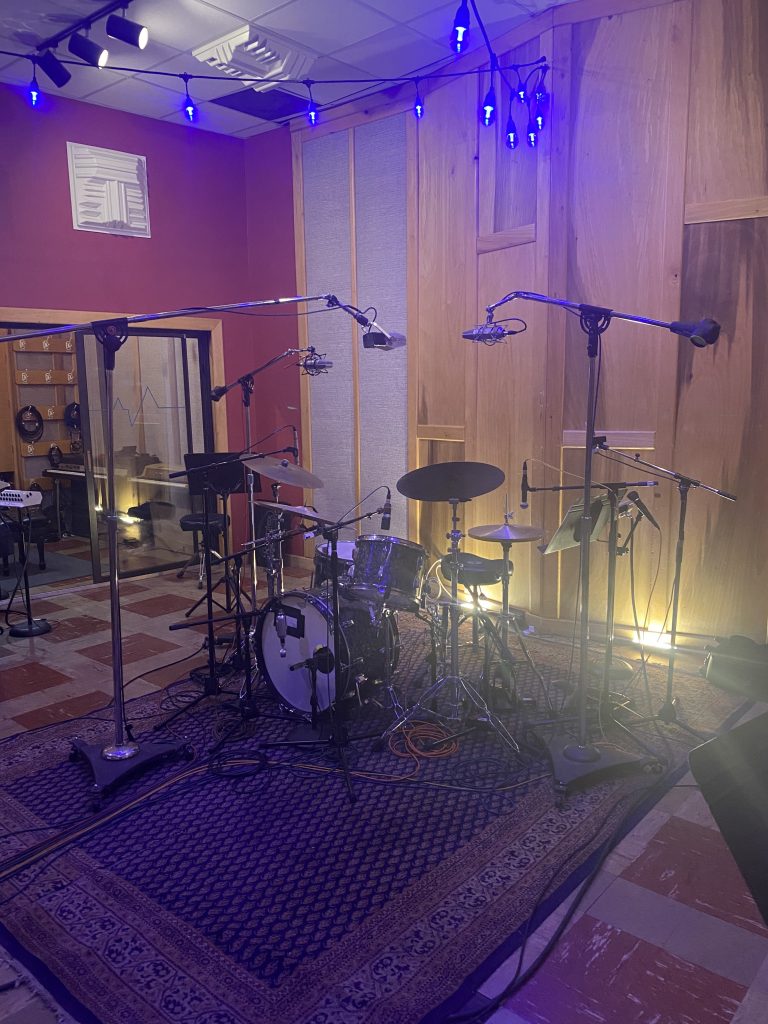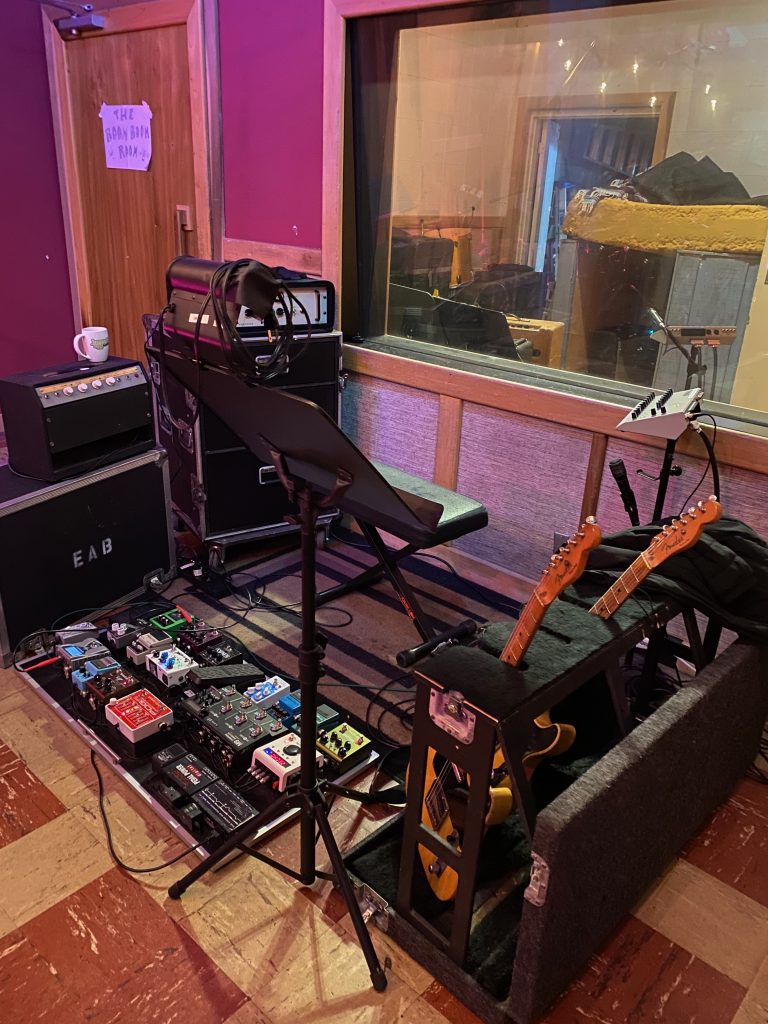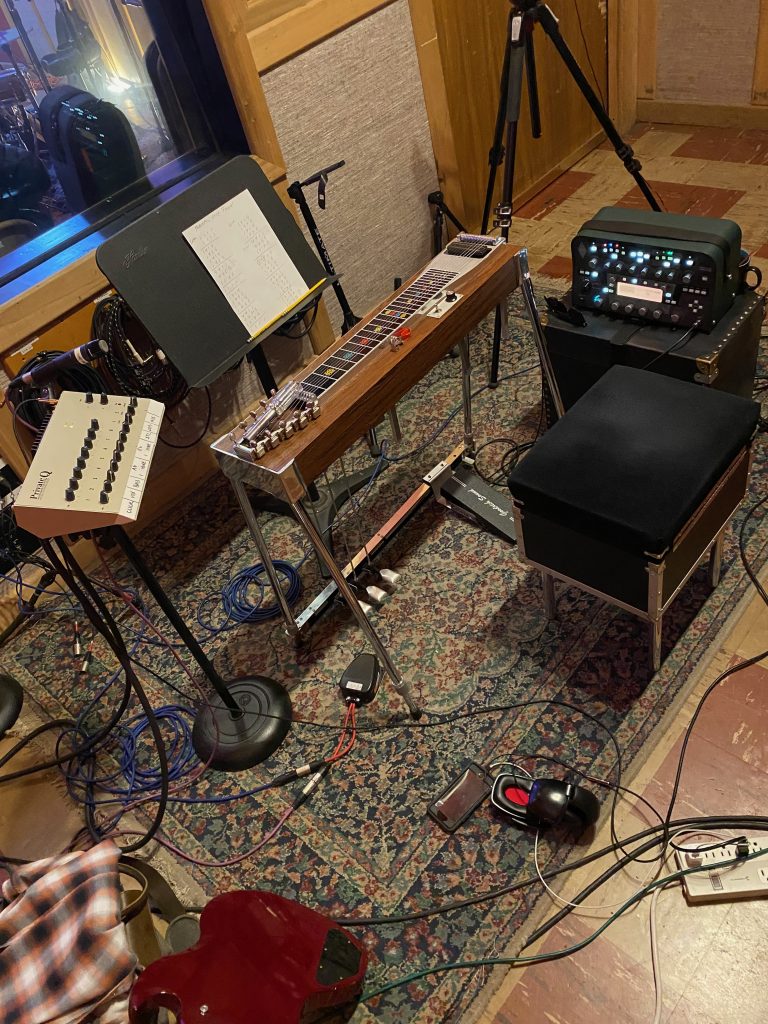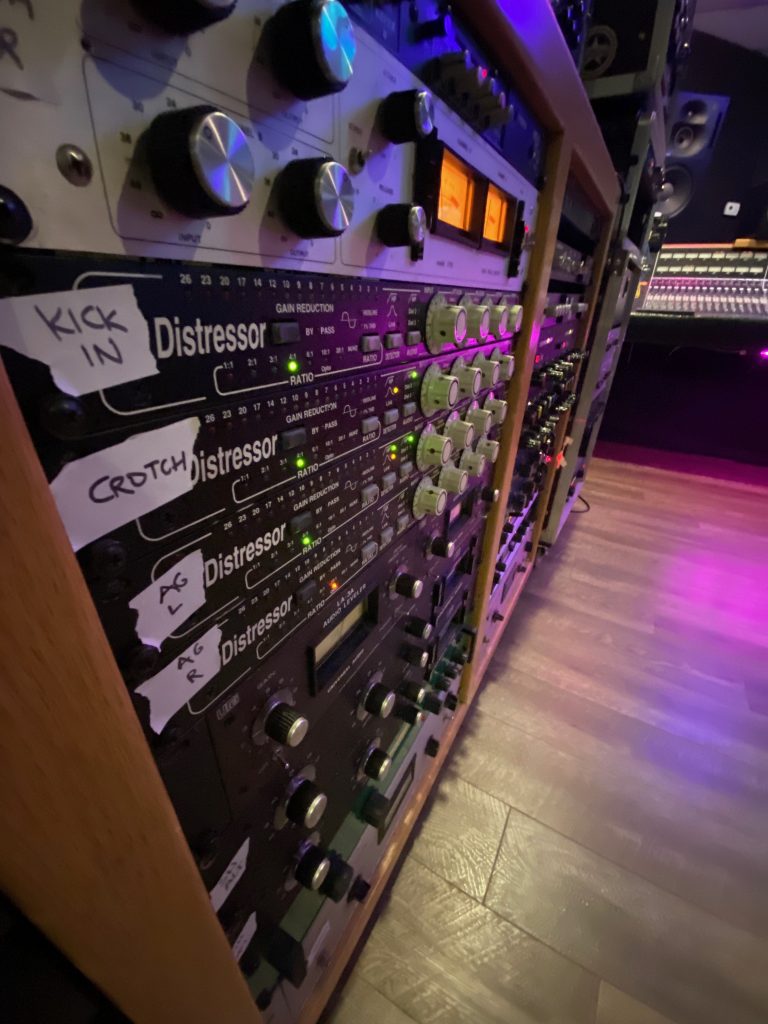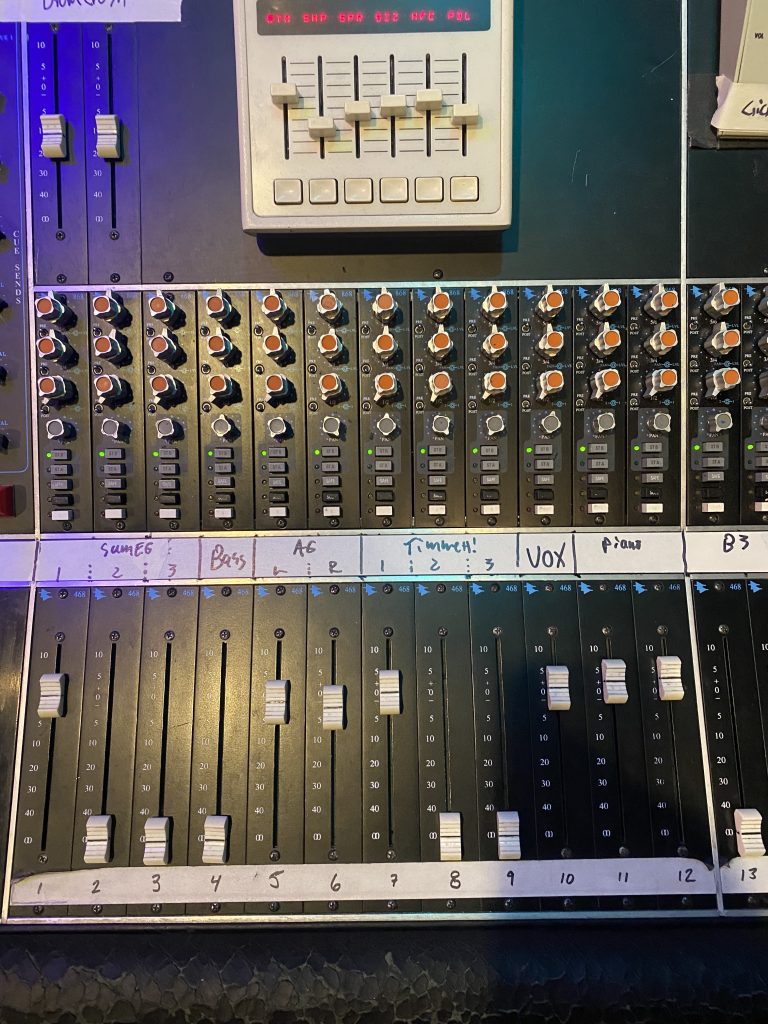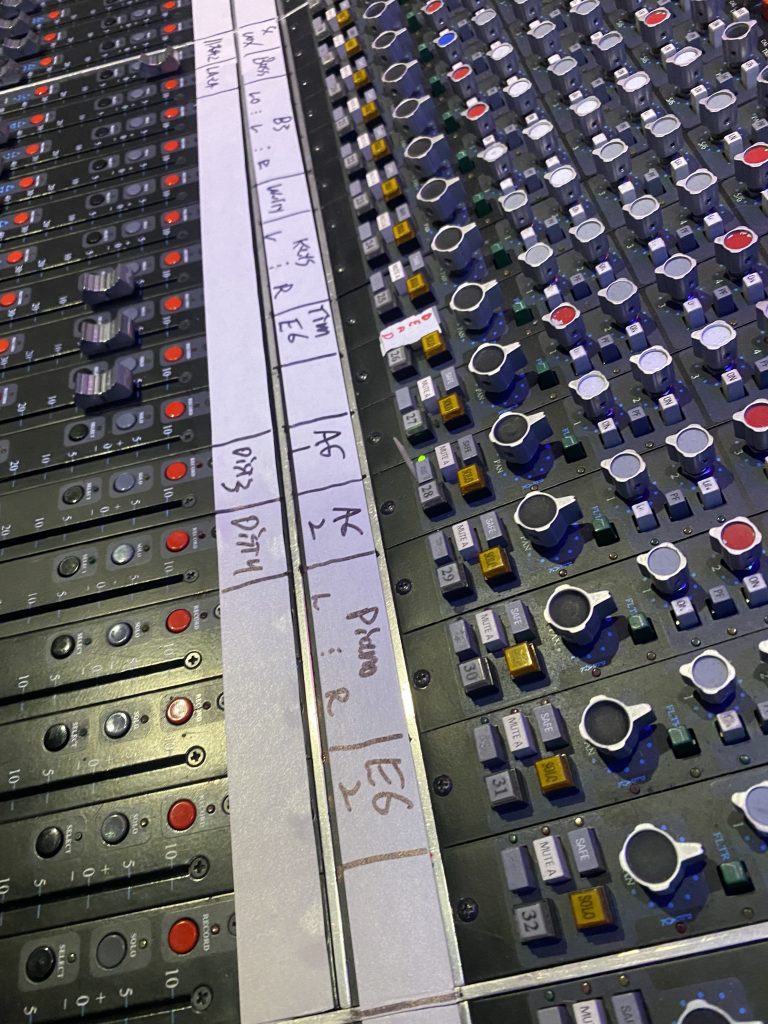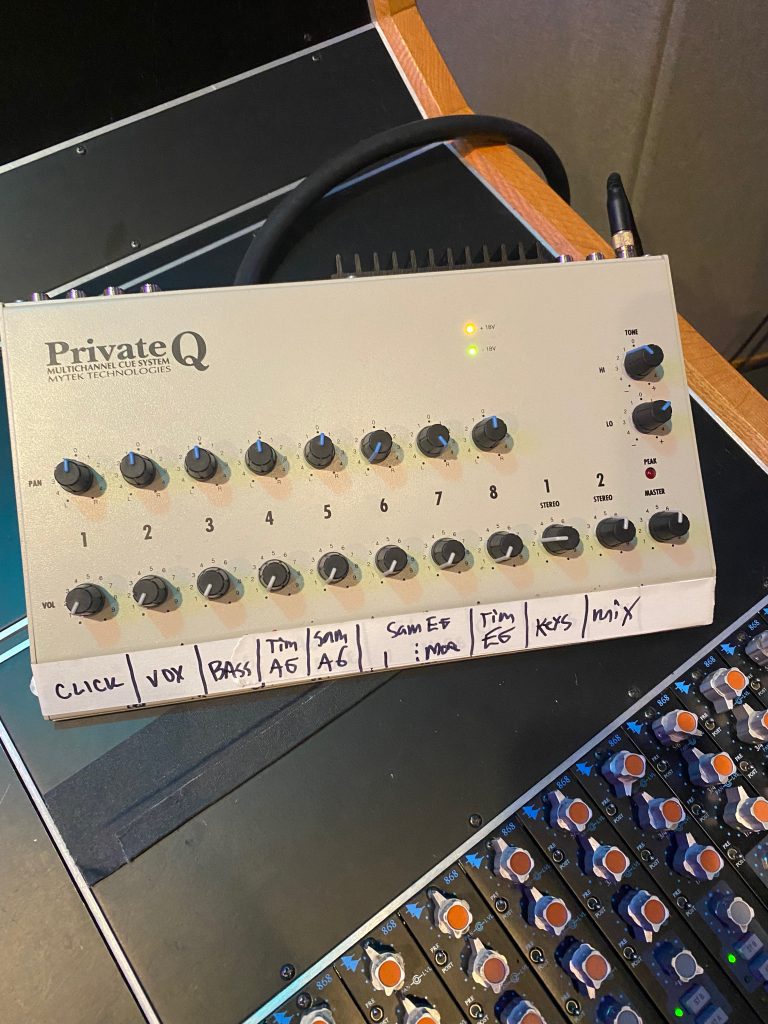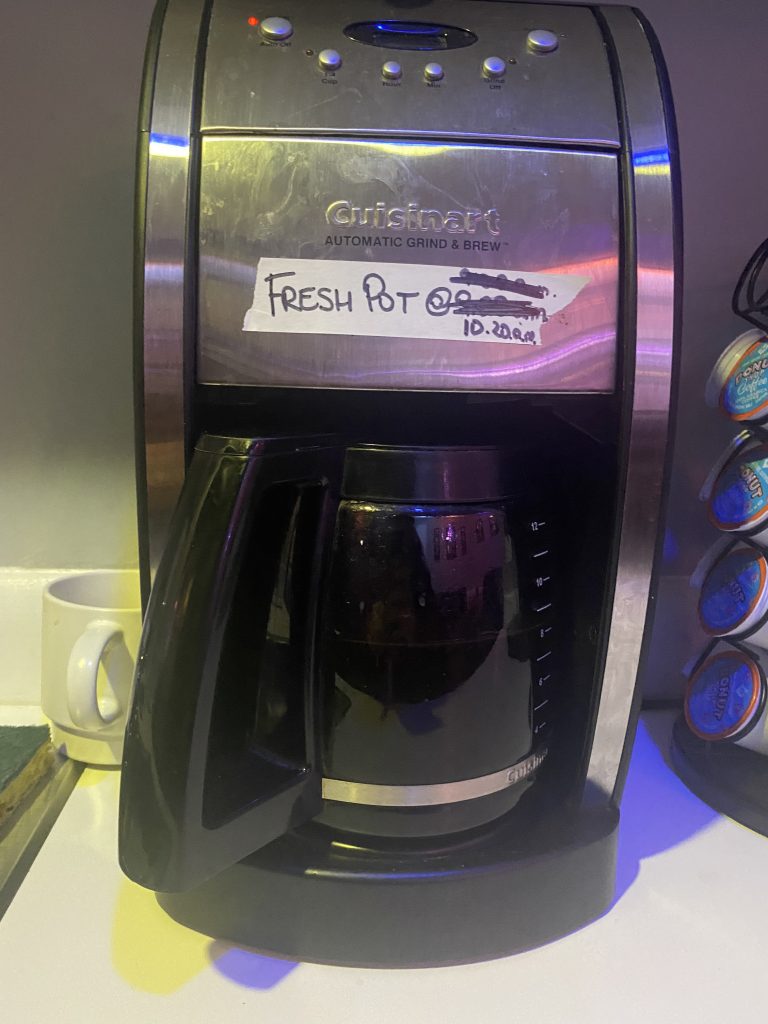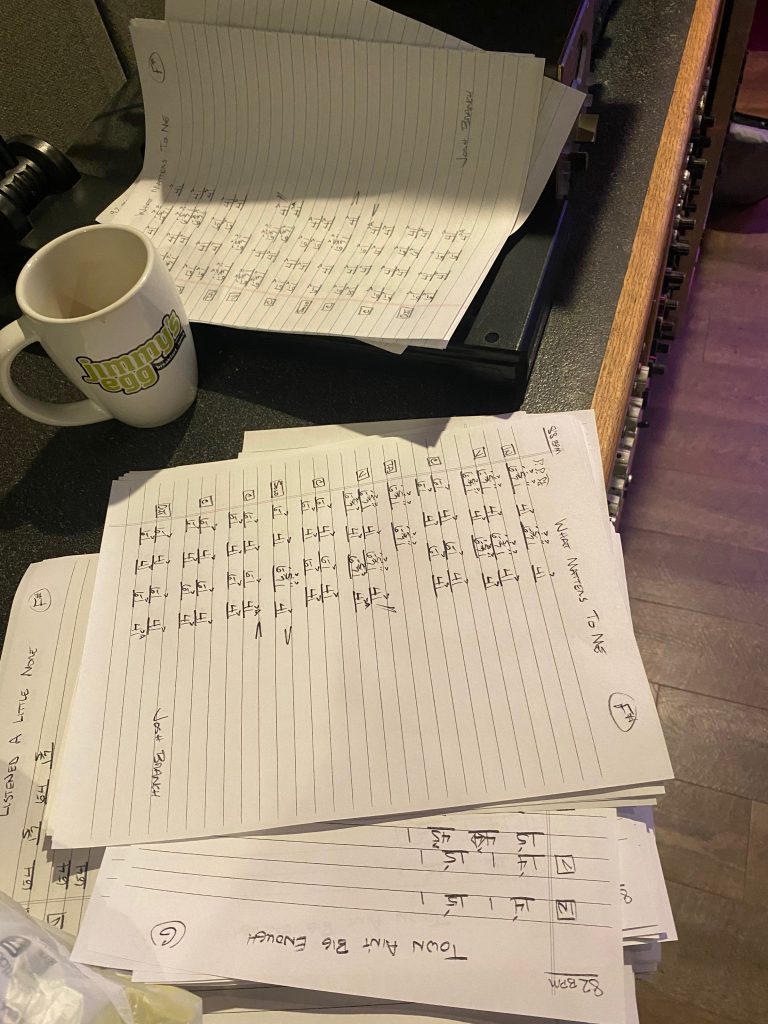Ein typischer Tag in den OmniSound Studios (D)
Das große Studio, “Studio A”, ist so gut wie jeden Tag gebucht. Wie bereits in einem vorherigen Post erklärt, gibt es in allen Studios in Nashville drei fixierte Zeit-Slots zu je drei Stunden, für die die Sessionmusiker*innen gebucht werden können: ab 10:00, ab 14:00 und ab 18:00 Uhr. Sehr oft werden zwei oder drei dieser Slots am Stück gebucht und pro Zeitfenster werden bis zu fünf Songs aufgenommen. Die Musiker*innen werden dabei nach dem Kollektiv der “Musicians Union”, die es hier in Nashville gibt, bezahlt. Wie hoch die Gage ist hängt davon ab, ob in der Session Demos, Songs für EP’s oder Songs für ganze Alben aufgenommen werden (Demo/ EP/ Master Sessions). Letztere sind am Besten bezahlt. Auch das Studio wird je nach Session-Typ unterschiedlich entlohnt. Bis jetzt ist 16 das Maximum an aufgenommenen Songs pro Tag, das ich hier erlebt habe.
Folgender Ablauf beschreibt einen Tag, an dem das Studio A für drei zusammenhängende Slots, also einen ganzen Tag, gebucht ist.
Am Vortag:
In den meisten Fällen bekommen wir am Vortag ein Setup-Sheet zugesendet (wenn ein externer Engineer die Session leitet) oder wir bauen das Standard-Setup von unserem Chief Engineer auf. Es wird oft das hauseigene Drum-Kit verwendet, es kann aber auch ein externes geliefert werden. Viele der Sessionmusiker haben Verträge mit Cartage-Companies, die ihr Equipment an die Studios liefern, es aufbauen und dieses wieder abholen (und zum nächsten Studio liefern). Das trifft nicht nur auf Drums, sondern auch auf Gitarren- oder Bass-Equipment zu. Im Idealfall kommt die Ausstattung am Vortag und das Setup kann schon komplett aufgebaut werden.
Sobald alle Mikrofone und Signale verbunden sind und eventuell Outboard Equipment in den Signalfluss eingebunden worden ist, wird dieser überprüft. Entweder durch ankratzen der Mikrofone oder mittels eines Cricket Systems – dabei wird eine Send und eine Receive Unit verwendet, um eine phasenkorrekte Übertragung zu kontrollieren. Von beiden Units (am Anfang und am Ende des Signalwegs) wird dieselbe Frequenz, bzw. derselbe Ton ausgesendet. Ist die Phase an einer Stelle umgedreht, löschen sich die beiden Töne aus. Ein rotes Licht auf den Units zeigt dies an. (https://www.galaxyaudio.com/products/cpts)
08:00 Uhr Ankunft im Studio:
Als erste Person im Studio entschärfe ich die Alarmanlage und drehe alle Lichter in den Gängen und Studios auf. Der erste Weg führt mich in den Aufnahmeraum, in dem das am Vortag vorbereitete Setup steht. Dieses überprüfe ich nochmals und schalte die Röhrenmikrofone ein, damit sie aufwärmen.
09:00 Uhr Externer Engineer trifft ein:
Der externe Engineer kommt mindestens eine Stunde früher, um eventuell eigene Mikrofone einzubauen und gemeinsam mit Josh, dem Assistant Engineer des Hauses, die Pro Tools Session nach seinen Wünschen vorzubereiten. Josh ist auch derjenige, der für Setup des Pults und das Patching des Outboard Equipments zuständig ist. Als Praktikant*in stellt man unterdessen sicher, dass für eine bessere Übersicht alle Kopfhörerverstärker richtig beschriftet sind und das Outboard Equipment gekennzeichnet ist.
09:30 Uhr Musiker*innen treffen ein:
“Downbeat”, also der Start der Aufnahme ist immer für 10:00 Uhr geplant, weshalb die Sessionmusiker*innen bereits davor eintreffen, um ihre Arbeitsplätze fertig vorzubereiten. Sobald dies passiert stelle ich sicher, dass eine frisch gebrühte Kanne Kaffee bereit steht. Der Session-Leader hat die niedergeschriebenen Charts für die Songs des jeweiligen Tages im Gepäck und ich fertige Kopien davon an. In der Musikszene hier kursiert der Aberglaube, dass die Originale Unglück bringen, weshalb ich diese meistens sofort verschwinden lasse.
Nach der Reihe werden nun die Signale eingepegelt und getweaked – viel Signal Processing passiert bereits im Vorderband mittels analogem Outboard und Channel-eigenen API-EQ’s.
10:00 Uhr Start der Aufnahme:
Nachdem die Charts ausgeteilt und eine Demoaufnahme gehört wurde, nehmen alle ihre Plätze ein und das Recording nimmt seinen Lauf. Sobald ein gemeinsamer Basistrack aufgenommen wurde, bessern die Musiker*innen einzelne Stellen aus und spielen Overdubs ein. Ist ein Song fertig finden sich wieder alle in der Regie ein um die Charts für den nächsten Song anzusehen. Meistens teile ich die Charts aus und dazu Stifte für Notizen während das nächste Demo angehört wird. Zu diesem Zeitpunkt drehe ich immer gerne eine Runde im Studio, sammle Müll und leere Kaffeebecher ein und halte alles in Ordnung. Grundsätzlich halte ich mich während den Recordings gerne im Hintergrund und bin bereit allfällige Aufgaben auszuführen. Falls viele Leute in der Regie sind verlasse ich sie um nicht im Weg zu stehen.
13:00 Uhr Lunch Break:
Rund um das Studio gibt es sehr viele Restaurants, Bars und Fast Food Joints, die in weniger als zwei Gehminuten erreichbar sind. Deshalb gehen in den Mittagspausen, die etwa 30 bis 45 Minuten dauern, meistens alle essen. Hin und wieder wird aber auch etwas bestellt und Praktikant*innen holen es ab, oder es wird geliefert.
Auch nach der Mittagspause ist es wichtig frischen Kaffee bereit zu halten. In der Lounge befindet sich ein Kühlschrank, der mit Softdrinks gefüllt ist, sowie eine kleine Snack Bar, die immer voll bestückt sein sollen.
Falls Essen bestellt wurde stelle ich sicher, dass die Küche und die Lounge wieder in einem ansehnlichen Zustand sind und dass die Mülleimer nicht übergehen. Ich überprüfe auch regelmäßig, ob genügend Klopapier und Papierhandtücher vorhanden sind.
21:00 Uhr Session Ende:
Es ist nicht garantiert, dass Sessions um diese Uhrzeit enden, man bleibt so lange es sein muss, räumt alles komplett weg, baut für die Session am nächsten Tag laut Setup-Sheet auf, bringt den Müll raus, schaltet die Alarmanlage ein und sperrt am Ende das Haus zu.
A typical day at OmniSound Studios (E)
The large studio, “Studio A”, is booked almost every day. As already explained in a previous post, all studios in Nashville operate in three time slots per day with a duration of three hours each. The session musicians can be booked from 10:00 a.m., from 2:00 p.m. and from 6:00 p.m. Very often two or three of these slots are combined and up to five songs are recorded per unit. The musicians are paid according to the “Nashville Musicians Union” collective. The amount depends on whether demos, songs for EPs or songs for entire albums are recorded in the session (demo/ EP/ master sessions). The latter is the highest paid for musicians and studio. So far, 16 is the maximum number of songs recorded in a day that I’ve experienced here.
The following procedure describes a day on which Studio A is booked for three consecutive slots, i.e. a whole day:
The day before:
In most cases we get a setup sheet sent to us the day before the recording (if an external engineer is leading the session) or we build the standard setup for our chief engineer. Sometimes an in-house drum kit is being used, sometimes an external one comes in. Many of the session musicians have contracts with cartage companies who deliver their equipment to the studios, set it up and collect it after the recording is finished (and deliver it to the nearest studio). This system doesn’t only apply to drums, but also to guitar or bass equipment. Ideally, the equipment comes in the day before the session and the setup can already be completed.
As soon as all microphones and signals are connected and any outboard equipment has been integrated into the signal flow, the lines are being checked. Either by scratching the microphones or using a cricket system. That means a send and a receive unit will be used to control phase-correct transmission. Both units (one at the beginning and one at the end of the signal path) emit the same frequency or the same tone. If the phase is reversed at one point, the two tones cancel each other out which is indicated by a red light on the unit. (https://www.galaxyaudio.com/products/cpts)
8 a.m. Arrival at the studio:
As the first person in the studio, I disarm the alarm system and turn on all the lights in the hallways and studios. The first way leads me to the recording room, where the setup prepared the day before is located. I quickly check it again and turn on the tube mics in order to let them warm up.
09:00 External engineer arrives:
The external engineer arrives at least an hour early in order to possibly install his or her own microphones and to prepare the Pro Tools session according to his or her wishes. Josh, the house’s assistant engineer is usually providing assistance. Josh is also the one responsible for setting up the desk and patching the outboard equipment. Meanwhile I’m making sure that all headphone amplifiers are labeled correctly, that every musicians station has headphones and the outboard equipment is labeled in order to give the engineer a better overview.
9 a.m. Musicians arrive:
“Downbeat”, i.e. the start of the recording, is always planned for 10:00 a.m., which is why the session musicians already arrive before that to time finish preparing their workstations. Once the first one walks in, I make sure a freshly brewed pot of coffee is ready. I help the band load in and load out their equipment. The session leader usually has handwritten charts for each of the songs and I make copies for the rest of the band. There’s a superstition circulating in the music scene saying that the originals bring bad luck, so I usually ditch them immediately after making the copies. After everyone is set up, the signals are leveled and tweaked – a lot of signal processing is already happening in the front band using analog outboard and the channel’s own API EQ’s.
10 a.m. Start of recording:
Most of the time I hand out the charts and pens for taking notes while the next demo is being listened to. Usually the producer/ session leader/ artist says a few words about the vibe the song is intended to have and the band takes down some notes on their charts. Then everyone takes their places and the recording begins. After a common base track has been recorded, the musicians improve and punch in on individual passages and play overdubs. When a song is finished, everyone returns to the control room to look at the charts for the next song. At this point, I always like to go around the studio, pick up trash and empty coffee mugs, and have an eye on keeping things tidy. Basically, I like to stay in the background during the recordings, but always ready to carry out any tasks. If there are a lot of people in the control room, I sometimes leave and stay in the lounge right outside of it to not get in the way.
1 p.m. Lunch break:
There are many restaurants, bars and fast food joints within walking distance around the studio. Therefore, during the lunch breaks, which last about 30 to 45 minutes, everyone usually goes out to eat. Every now and then food is ordered and I go pick it up or it is delivered.
After the lunch break, it is important to have fresh coffee ready. It is also my responsibility to always have the fridge filled with soft drinks and to keep the small snack bar stocked.
If food has been ordered I will ensure the kitchen and lounge are set back into clean conditions and that the trash bins are not overflowing. I also regularly check that there is enough toilet paper and paper towels in the restrooms.
9 p.m. Session end:
There is no guarantee that sessions will end at this time, you stay as long as you have to, help loading out, clear the room, set up for the next day’s session according to the setup sheet, take out the trash, turn on the alarm system and lock the house.
